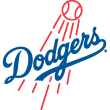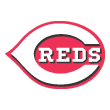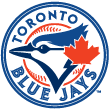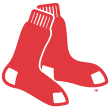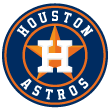How the Cardinals use sabermetrics
By Anna McDonald | ESPN.com
ST. LOUIS -- On the bookshelves in John Mozeliak's office, several books with a dark background and bright red letters on the spine stand out. The shelves hold many items, some pictures and many baseball books, but it is the red letters the eye gravitates toward. They read, "Bill James Handbook."
It is surprising Mozeliak would have books by Bill James, whom Bob Costas once described as the man responsible for revolutionizing baseball, only because as the St. Louis Cardinals' general manager he has available to him endless statistical information most of us will never see. What does he do with these books?
Mozeliak says he likes the James handbooks because he can get a quick snapshot of players and they are all in alphabetical order.
"A lot of times I label the pages of particular players I'm working on and just flip to it," Mozeliak said. "The James book to me is almost more like baseball cards' stats now. I utilize our own internal system, which is more sophisticated and gives us sort of different answers anyway, so I have both at my disposal."
People define sabermetrics in many different ways, but for Mozeliak sabermetrics is a tool and a reference for how one can value players.
"Sabermetrics to me was always sort of the society of baseball and math; where they collide," Mozeliak said. "I also think it's a little more of the history of the game, and an appreciation for performance in terms of how you rank players."
In 2004 the Cardinals made a conscious effort to build an analytics department. A baseball team can’t become sabermetric-minded overnight; it takes time to establish and then time to work out the kinks.
"At the time we called it Baseball Development," Mozeliak said of the initiative. "We still have that department in play. It's evolved quite a bit. We no longer solely have people in that department that don't have some baseball background. It is a diverse group, and that group is looking at how to best combine advanced metrics as well as traditional scouting."
Mozeliak says people working in baseball naturally gravitate to numbers. He does not have a degree in math but says, "there are guys down this hall that do." While he uses advanced statistics, he doesn't throw out all the traditional ones.
"I do think ERA has relevance on the pitching side," Mozeliak said. "Although it is not perfect, it does give you an idea of how [pitchers] are performing."
He also utilizes WAR, a linear weights statistic that when used to evaluate batters combines batting, fielding, baserunning and replacement level by position.
"There is no perfect stat, but when you look at trying to define Wins Above Replacement, it is a very simple place to grab information and get a feel for it," he said.
There are several versions of WAR out there, and while he looks at all of them, he does have a favorite.
"I use our own internal system, because that's what I'm most familiar with and also in the past five, six years I feel like we've made very good decisions based on it," Mozeliak said. "My confidence in it is very strong."
The job of a general manager is filled with constant decision-making. In the past teams would rely solely on scouting information and very generic statistics. Mozeliak says using advanced statistics helps him make the best decisions possible.
"Now we're able to combine these advanced stats with the ability now to really create a model that gives us sort of recommendations on contracts, salary and length," he said. "When you start thinking about things like the aging curve -- that is something I think 20, 30 years ago when players were signing contracts, they were signing contracts for what they accomplished -- now people are signing contracts for what you expect them to do."
It is general knowledge that most teams use some sort of advanced statistics these days. While some teams use them more than others, the industry is learning how to use sabermetrics to gain even the smallest of edges.
"When everybody is doing the same thing or close to it, is there a competitive advantage? Probably not, right? So when you think about how all organizations now are valuing certain things, what we do now is spend a lot of energy trying to determine what is being overvalued and then look at what is undervalued. Then maybe we should be swimming at that end of the pool. So, that's one focus."
The other focus is a more corporate approach. Mozeliak describes it this way: "Meaning, here we have this way of thinking that's on top of the company. How do we get that to be accepted from a bottom-up approach?"
It is one thing for front offices to use advanced statistics, but for teams to gain an advantage, the statistical research also needs to trickle down to on-field personnel.
"What we do is we don't force-feed it, we don't necessarily tell people, 'This is how you have to think and here's why,' but we do [give] subtle examples of why we think it is important, why we value certain things from an analytical side and how they can incorporate that into their day-to-day job. I assure you it's not a [meeting] where we sit down there and have a statistical advanced class every spring training, because it is just not helpful.
"Player development, for example, they understand what they are doing; they understand their business and they're good at it. I will say where analytics do come into play is two places. One is the amateur draft. It has become a really important tool for the success of our operation. The other part that comes into play is determining promotions and demotions in minor league players and, again, we do not solely make decisions on what these numbers say. We allow all the people we have working for us to have a voice in this, but we do have some guidelines that we use that help us make these decisions."
When evaluating a player such as outfielder Oscar Taveras, a top prospect in the Cardinals organization and one of the best in baseball, there are several prongs to making a decision on what turns a prospect into a major league player. Mozeliak says you can think of the process as legs to a table.
"If you lose one or two the table falls, so you really need all [of them] to stabilize your decisions," Mozeliak said.
One aspect would be the scouting, such as bat speed or a player's mechanics. A second is statistics. For the Cardinals, another important part is work ethic and character.
"The character component of our decision-making does not account for anything in the analytical world," said Mozeliak. "We don't put it in the algorithm, because it is just not there, but we do try to do our due diligence on the back end on what kind of person they are and how they will fit into our clubhouse, because we really do feel that's a key component to our success."
Projections are yet another branch, but they can be tricky.
"Projections at the lower levels are very difficult to use for major league projections," Mozeliak said in evaluating a player such as Taveras. "Having said that, when you do have the kind of performances he's had, it's not hard to start looking at major league projections for him. So, Taveras actually is into that now for us."
In recent years the Cardinals seem to have a tendency to emphasize college players in the draft. Is this a product of relying highly on analytics?
"I will say that when you look at collegiate players from an analytical standpoint, it is much easier to make projections versus high school stats. [High school stats are] really a lot of noise with no real clear answer," Mozeliak said. "We do try to balance off the draft where we are not exclusively college or high school. Now I think a lot of our success stories have come from college, but I think in time, maybe in 2014, 2015, you are going to see this shift of the Shelby Millers of the world show why we drafted him."
On the major league level advanced statistics do trickle down to the coaches. Mozeliak says the daily job of determining who should play and why they should play is a decision that takes into account so many things most of us never see. He says it is helpful having a manager like Mike Matheny who is willing to look at advanced statistics, but at the same time Mozeliak doesn't want to create a "paralysis downstairs" because the advanced statistics can be a little overwhelming.
"I believe how [Matheny] puts a lineup together is that he is utilizing things we give him from upstairs, but we don't want to bury him with having to overthink things. Most importantly, we hire a manager to make that lineup. I do think one thing that Mike and his staff have done a very good job of is embracing anything we can put together as far as advanced scouting for them. Trying to eliminate small sample sizes and make them accept larger ones for probabilities has been helpful. Mike, he is a young manager that is very interested at looking at the best ways to be successful, so that's always a good sign when you have that in an employee."
Mozeliak's goal is for the coaches to tell him and the statistics department what information they want and need, rather than just feeding them information the analytics department has put together. At some point though, as more teams figure out how to use advanced statistics in a way that will trickle down to on-field decisions, will the Cardinals need to reinvent or revise the entire process to maintain an edge?
"I think so," he said.
"Your first statement is the truest of all," Mozeliak continued. "When you said, 'How do you have a competitive advantage?' There may come a time when there is no place to push stats, like some of the defensive world is still improving, right? Nobody feels like they've got that nailed, but with the creation of f/x data there's a chance it is going to get pretty good quickly. [FIELDf/x data tracks player positions, providing feedback for reaction times and if a play in the field was even possible]. So from an organizational standpoint, we are always looking at ways that might have nothing to do with stats, but give us that advantage."
For now, Mozeliak's desk offers a clue to one way the Cardinals have maintained a competitive edge since he became general manager in October 2007. There are a few black binders scattered about on his desk. There is also a copy of "The Hardball Times 2013 Annual" on top of a pile of papers. When I ask if it is all right if I mention that he reads these sabermetric books, Mozeliak smiles and with the tone of confidence only a GM with one World Series championship under his belt (and plans for more rings in the future) can have, says, "Sure."
"They are there, I use them," Mozeliak admitted. "My geeky reading."
By Anna McDonald | ESPN.com
ST. LOUIS -- On the bookshelves in John Mozeliak's office, several books with a dark background and bright red letters on the spine stand out. The shelves hold many items, some pictures and many baseball books, but it is the red letters the eye gravitates toward. They read, "Bill James Handbook."
It is surprising Mozeliak would have books by Bill James, whom Bob Costas once described as the man responsible for revolutionizing baseball, only because as the St. Louis Cardinals' general manager he has available to him endless statistical information most of us will never see. What does he do with these books?
Mozeliak says he likes the James handbooks because he can get a quick snapshot of players and they are all in alphabetical order.
"A lot of times I label the pages of particular players I'm working on and just flip to it," Mozeliak said. "The James book to me is almost more like baseball cards' stats now. I utilize our own internal system, which is more sophisticated and gives us sort of different answers anyway, so I have both at my disposal."
People define sabermetrics in many different ways, but for Mozeliak sabermetrics is a tool and a reference for how one can value players.
"Sabermetrics to me was always sort of the society of baseball and math; where they collide," Mozeliak said. "I also think it's a little more of the history of the game, and an appreciation for performance in terms of how you rank players."
In 2004 the Cardinals made a conscious effort to build an analytics department. A baseball team can’t become sabermetric-minded overnight; it takes time to establish and then time to work out the kinks.
"At the time we called it Baseball Development," Mozeliak said of the initiative. "We still have that department in play. It's evolved quite a bit. We no longer solely have people in that department that don't have some baseball background. It is a diverse group, and that group is looking at how to best combine advanced metrics as well as traditional scouting."
Mozeliak says people working in baseball naturally gravitate to numbers. He does not have a degree in math but says, "there are guys down this hall that do." While he uses advanced statistics, he doesn't throw out all the traditional ones.
"I do think ERA has relevance on the pitching side," Mozeliak said. "Although it is not perfect, it does give you an idea of how [pitchers] are performing."
He also utilizes WAR, a linear weights statistic that when used to evaluate batters combines batting, fielding, baserunning and replacement level by position.
"There is no perfect stat, but when you look at trying to define Wins Above Replacement, it is a very simple place to grab information and get a feel for it," he said.
There are several versions of WAR out there, and while he looks at all of them, he does have a favorite.
"I use our own internal system, because that's what I'm most familiar with and also in the past five, six years I feel like we've made very good decisions based on it," Mozeliak said. "My confidence in it is very strong."
The job of a general manager is filled with constant decision-making. In the past teams would rely solely on scouting information and very generic statistics. Mozeliak says using advanced statistics helps him make the best decisions possible.
"Now we're able to combine these advanced stats with the ability now to really create a model that gives us sort of recommendations on contracts, salary and length," he said. "When you start thinking about things like the aging curve -- that is something I think 20, 30 years ago when players were signing contracts, they were signing contracts for what they accomplished -- now people are signing contracts for what you expect them to do."
It is general knowledge that most teams use some sort of advanced statistics these days. While some teams use them more than others, the industry is learning how to use sabermetrics to gain even the smallest of edges.
"When everybody is doing the same thing or close to it, is there a competitive advantage? Probably not, right? So when you think about how all organizations now are valuing certain things, what we do now is spend a lot of energy trying to determine what is being overvalued and then look at what is undervalued. Then maybe we should be swimming at that end of the pool. So, that's one focus."
The other focus is a more corporate approach. Mozeliak describes it this way: "Meaning, here we have this way of thinking that's on top of the company. How do we get that to be accepted from a bottom-up approach?"
It is one thing for front offices to use advanced statistics, but for teams to gain an advantage, the statistical research also needs to trickle down to on-field personnel.
"What we do is we don't force-feed it, we don't necessarily tell people, 'This is how you have to think and here's why,' but we do [give] subtle examples of why we think it is important, why we value certain things from an analytical side and how they can incorporate that into their day-to-day job. I assure you it's not a [meeting] where we sit down there and have a statistical advanced class every spring training, because it is just not helpful.
"Player development, for example, they understand what they are doing; they understand their business and they're good at it. I will say where analytics do come into play is two places. One is the amateur draft. It has become a really important tool for the success of our operation. The other part that comes into play is determining promotions and demotions in minor league players and, again, we do not solely make decisions on what these numbers say. We allow all the people we have working for us to have a voice in this, but we do have some guidelines that we use that help us make these decisions."
When evaluating a player such as outfielder Oscar Taveras, a top prospect in the Cardinals organization and one of the best in baseball, there are several prongs to making a decision on what turns a prospect into a major league player. Mozeliak says you can think of the process as legs to a table.
"If you lose one or two the table falls, so you really need all [of them] to stabilize your decisions," Mozeliak said.
One aspect would be the scouting, such as bat speed or a player's mechanics. A second is statistics. For the Cardinals, another important part is work ethic and character.
"The character component of our decision-making does not account for anything in the analytical world," said Mozeliak. "We don't put it in the algorithm, because it is just not there, but we do try to do our due diligence on the back end on what kind of person they are and how they will fit into our clubhouse, because we really do feel that's a key component to our success."
Projections are yet another branch, but they can be tricky.
"Projections at the lower levels are very difficult to use for major league projections," Mozeliak said in evaluating a player such as Taveras. "Having said that, when you do have the kind of performances he's had, it's not hard to start looking at major league projections for him. So, Taveras actually is into that now for us."
In recent years the Cardinals seem to have a tendency to emphasize college players in the draft. Is this a product of relying highly on analytics?
"I will say that when you look at collegiate players from an analytical standpoint, it is much easier to make projections versus high school stats. [High school stats are] really a lot of noise with no real clear answer," Mozeliak said. "We do try to balance off the draft where we are not exclusively college or high school. Now I think a lot of our success stories have come from college, but I think in time, maybe in 2014, 2015, you are going to see this shift of the Shelby Millers of the world show why we drafted him."
On the major league level advanced statistics do trickle down to the coaches. Mozeliak says the daily job of determining who should play and why they should play is a decision that takes into account so many things most of us never see. He says it is helpful having a manager like Mike Matheny who is willing to look at advanced statistics, but at the same time Mozeliak doesn't want to create a "paralysis downstairs" because the advanced statistics can be a little overwhelming.
"I believe how [Matheny] puts a lineup together is that he is utilizing things we give him from upstairs, but we don't want to bury him with having to overthink things. Most importantly, we hire a manager to make that lineup. I do think one thing that Mike and his staff have done a very good job of is embracing anything we can put together as far as advanced scouting for them. Trying to eliminate small sample sizes and make them accept larger ones for probabilities has been helpful. Mike, he is a young manager that is very interested at looking at the best ways to be successful, so that's always a good sign when you have that in an employee."
Mozeliak's goal is for the coaches to tell him and the statistics department what information they want and need, rather than just feeding them information the analytics department has put together. At some point though, as more teams figure out how to use advanced statistics in a way that will trickle down to on-field decisions, will the Cardinals need to reinvent or revise the entire process to maintain an edge?
"I think so," he said.
"Your first statement is the truest of all," Mozeliak continued. "When you said, 'How do you have a competitive advantage?' There may come a time when there is no place to push stats, like some of the defensive world is still improving, right? Nobody feels like they've got that nailed, but with the creation of f/x data there's a chance it is going to get pretty good quickly. [FIELDf/x data tracks player positions, providing feedback for reaction times and if a play in the field was even possible]. So from an organizational standpoint, we are always looking at ways that might have nothing to do with stats, but give us that advantage."
For now, Mozeliak's desk offers a clue to one way the Cardinals have maintained a competitive edge since he became general manager in October 2007. There are a few black binders scattered about on his desk. There is also a copy of "The Hardball Times 2013 Annual" on top of a pile of papers. When I ask if it is all right if I mention that he reads these sabermetric books, Mozeliak smiles and with the tone of confidence only a GM with one World Series championship under his belt (and plans for more rings in the future) can have, says, "Sure."
"They are there, I use them," Mozeliak admitted. "My geeky reading."






























































